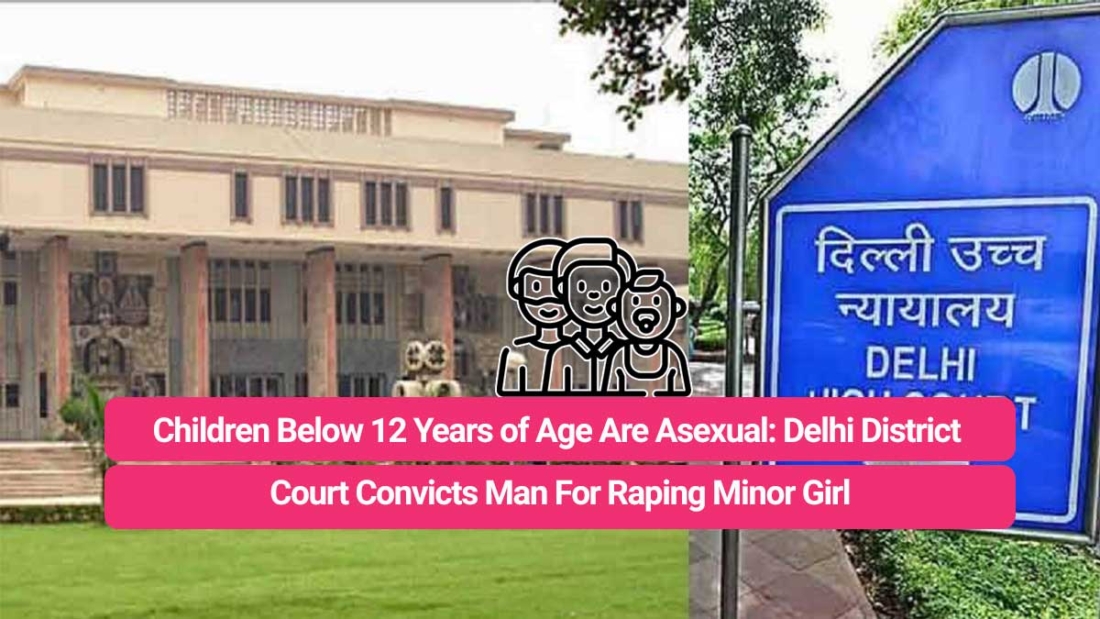Brief facts of the case:
Accused “M” was charged for sexually assaulting the minor victim “A” on the roof of the building where the accused and minor victim, along with her parents, were residing. On the basis of information given by a person through a mobile, DD No. 42A was lodged at police station. Police reached at crime spot and after preliminary examination, the minor victim was sent for medical examination to the hospital. After medical examination, the minor victim was brought to police station and her statement was recorded. On the basis of the said statement, FIR was filed under Sec-376 and Sec-506 of IPC read with Sec-6 of the POCSO Act. The accused was arrested after ensuring investigation and after medical examination, produced before Special Judge who sent the accused to judicial custody. After recording of statement under Sec-164 of CrPC and further enquiries regarding age of the victim, the accused was charged under Sec-6 of POCSO Act and Sec-506 under IPC.
Defendant’s Arguments:
- The defendant denied all the allegations and circumstances produced by the prosecution by stating that they had been falsely implicated by the parents of minor victim.
- The Counsel for accused urged that there were various inconsistencies and improvements in the statement of minor victim. They argued that the prosecutrix gave three different statements during the reporting of matter, statement under Sec-164 CrPC and final deposition in the Court, respectively.
- The counsel urged that the building where the crime was committed, was a big question because that building was located in densely populated area and the roofs of the houses were adjoined. They found the fact stated by the minor victim in her statement, unconceivable that accused committed the crime during day time but nobody has seen that.
- Defendant’s counsel pointed out that no PCR form at no. 100 was placed and the DD No. 42A was forged as it was showing wrong date.
- Lastly, they argued that the minor victim had not explained how she sustained the nail marks on her body and from the vaginal examination of the vaginal swab, no male DNA was found. Therefore, there is no evidence that the accused sexually assaulted the victim in any of the way deposed by her.
Observation of the Court:
- Court gave thoughtful consideration to all the submissions, oral and documentary evidence led during the trial. Court referred to the relevant provisions of the POCSO Act and said that the Act has been enacted not only to protect the children from the offences of sexual assault but also to introduce child friendly jurisprudence by providing for establishment of Special Courts for trial of such offences.
- Court referred to the case of Aman Kumar vs. State of Haryana, (2004) 4 SCC 379, although the aspect of “penetration” was addressed in the context of the then existing definition of rape, and it was held that in order to constitute penetration, there must be evidence clear and cogent to prove that some part of the virile member of the accused was within the labia of the pudendum of the woman, no matter how little. Further, referring to a Supreme Court judgement in case of Wahid Khan vs. State of Madhya Pradesh, (2010) 2 SC 9 in which it was held that even slightest penetration is sufficient to make out an offence of rape and depth of penetration is immaterial.
- Judge Dharmesh Sharma observed that “I am unable to persuade myself to find any blemishes in the testimony of the prosecutrix so as to find her story unreliable. The testimony of the prosecutrix is not to be appreciated from an adult point of view, but from the mindset of a child. The children often find it difficult to express themselves for variety of reasons, and when someone close to the family subjects them to sexual abuse, they are reluctant to discuss sexual abuses with their parents as they are unsure as to how their parents would react. The children less than 12 years of age are “asexual “and they normally take time to recognize that the disguised love, affection or warmth by the perpetrator is wrongful or sinful, and on becoming aware of its implications, the next stage is that of putting up resistance and reporting the incident to the near and dear.
- Court observed that the threat given by the accused to the prosecutrix, squarely falls within the scope and ambit of the Sec-506 of IPC.
Accordingly, the accused was held guilty and convicted under Sec-5(i) read with Sec-6 of the POCSO Act and for threatening the prosecutrix under Section 506 IPC.
Vaishali Jain, Advocate & Associate – Child Safety at Work & Riddhima Khanna
 Cart is empty
Cart is empty 

